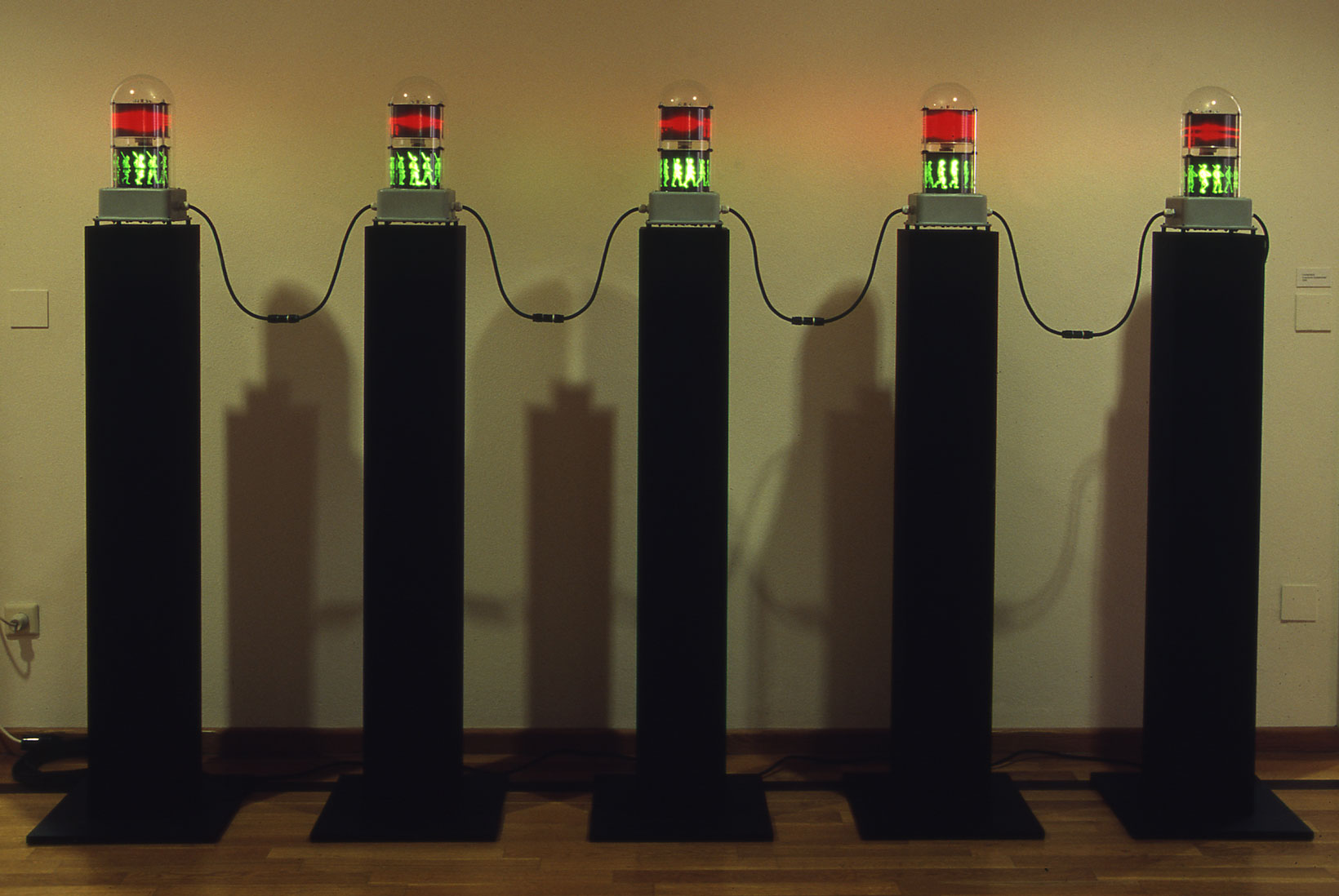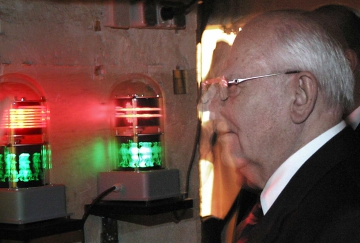
Umsetzung: In 5 LED-Filmloopmaschinen marschieren Soldaten im Kreis unter ihrem rotierenden Fahneneid.
Implementation: Five LED film-loop machines display soldiers marching in circles around their revolving pledge of allegiance.
Ausstellungen | exhibitions:
HŒHERE WESEN, Zeppelin Museum Friedrichshafen, 2011/12
VALUTA, Museum Goch, 2006
Der freie Wille, Bunker der Arena Berlin, 2005
Publikationen:
VALUTA, Museum Goch, 2007
Der freie Wille, Berlin, 2005
Der Wert freien Denken und Handelns wird besonders deutlich bei der Betrachtung militärischer Disziplinierung, Willensbeschneidung und Entindividualisierung, die in ihrer kriegerischen Konsequenz in Unterdrückung des Gegners und der Aufzwingung eigener Ideologien mündet. Zur völligen Aufgabe des Freien Willens hin zu blindem Gehorsam wird der Fahneneid abverlangt. Dieser Eid ist ein Komprimat der Ideologie des jeweiligen Systems und der Inbegriff von Willensunterwerfung bis in den Tod. Auch im Kontext zu dem militärisch determinierten Ausstellungsraum des Bunkers kann eine analytische Gegenüberstellung der fünf ! verschiedenen Deutschen Fahneneide (1871 bis heute) zu erstaunlichen Erkenntnissen führen.
THE PLEDGE OF ALLEGIANCE
The value of freedom of thought an action becomes especially clear in face of the discipline, negation of the individual will, and de-personalization practiced in the military with the aim of subjugating and imposing ones own ideology on the enemy. The pledge of allegiance is required as proof of total surrender of the free will to the point of blind submission. The pledge is a focal point of the ideology of the particular system and the epitome of complete submission, even unto death, if necessary. Particularly, perhaps, in a site whose context is as determined by the military as a bunker, a comparative analysis of the five (!) different pledges of allegiance utilized in Germany from 1871 up to the present can yield surprising insights.
serment d’allégeance
La valeur de la liberté de pensée et d’action devient particulièrement claire lorsqu’on considère la discipline militaire, la limitation de la volonté et la désindividualisation, qui, dans sa conséquence guerrière, conduit à la suppression de l’ennemi et à l’imposition de ses propres idéologies. Le serment d’allégeance est exigé pour l’abandon complet du libre arbitre à une obéissance aveugle. Ce serment est un condensé de l’idéologie du système respectif et l’épitomé de la soumission de la volonté à la mort. Même dans le contexte de l’espace d’exposition militairement déterminé du bunker, une comparaison analytique des cinq ! différents serments d’allégeance allemands (de 1871 à aujourd’hui) peut mener à des aperçus étonnants.





